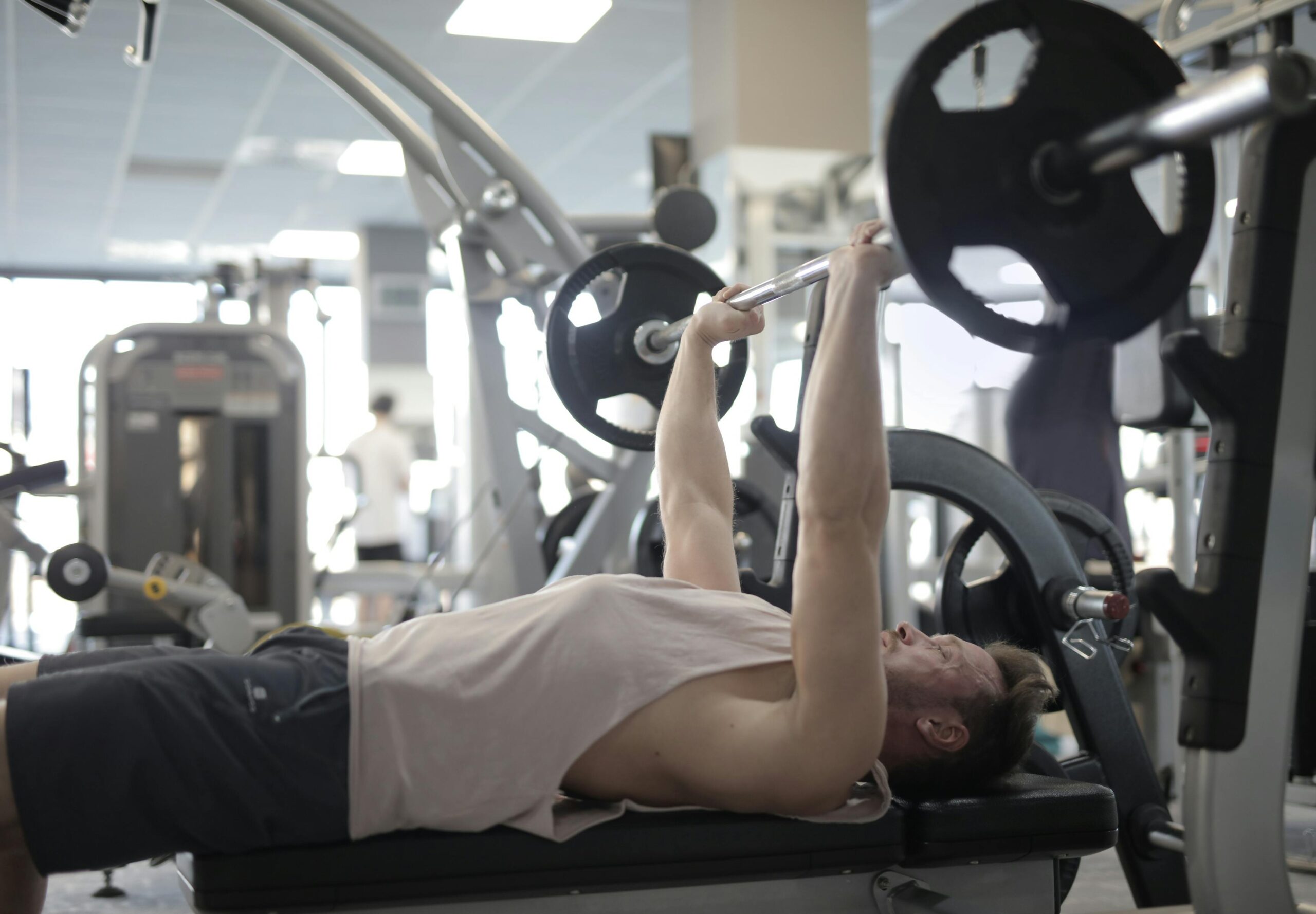Essential Guide to Shoulder Press: Improve Your Muscle Strength in 2025
The shoulder press, a fundamental exercise in strength training, is an excellent way to enhance muscle strength and stability in the upper body. As fitness enthusiasts and professionals anticipate 2025, understanding the nuances of shoulder press techniques can significantly impact training effectiveness. This exercise targets the shoulder muscles, particularly the deltoids, and develops strength in the triceps and upper back as well. The shoulder press is versatile, accommodating various styles including barbell, dumbbell, or kettlebell presses, making it a staple in both bodybuilding and general fitness routines.
The significance of shoulder presses extends beyond the pursuit of muscle hypertrophy; they also contribute to better posture and rehabilitation strategies for shoulder injuries. This article will provide an overview of the shoulder press, effective techniques, common mistakes to avoid, and tips on how to integrate it into a balanced fitness program. Let’s explore the benefits, proper form, and essential modifications for all fitness levels while maximizing your muscle-building potential.
Key takeaways include understanding the mechanics of shoulder presses, their role in overall fitness goals, effective training methods, and strategies for injury prevention. Let’s dive into the multi-faceted world of shoulder presses and elevate your fitness journey.

Essential Techniques for Effective Shoulder Pressing
Building on the foundational importance of the shoulder press, it’s crucial to master the techniques involved for optimal results. The way you execute this exercise can significantly influence the muscle engagement and safety during workouts.
Understanding Shoulder Press Mechanics
The shoulder press primarily engages the deltoids and requires proper biomechanics for maximum effectiveness. Understanding the shoulder joint’s movement patterns is essential. When performing the shoulder press, it’s important to keep the back straight and the core engaged. Begin by setting the weight at shoulder height and press vertically overhead while maintaining control throughout the movement. This will not only target the shoulder muscles but will also engage the core and stabilizing muscles of the back, enhancing overall strength.
Choosing Between Barbell and Dumbbell Shoulder Press
Both barbell and dumbbell shoulder presses offer distinct advantages. Barbell shoulder presses allow for heavier lifting, promoting strength gains, while dumbbells encourage more significant range of motion and improved stability. For beginners, starting with dumbbells can help develop shoulder stability and proper form, while advanced lifters may incorporate barbell presses to maximize the load and intensify their workouts.
Integrating Variations for Comprehensive Training
To avoid plateaus and stimulate muscle growth, integrating variations of the shoulder press is beneficial. Some popular modifications include the Arnold press, where you rotate the palms inwards on the descent for greater range of motion, and the seated shoulder press, which provides additional stability. Incorporating resistance bands or cable machines can also add variety and challenge to traditional shoulder pressing.
Progressing Weight and Reps
Progressive overload is crucial for muscle development. Gradually increasing the weight or the number of repetitions ensures continuous adaptation. Fitness professionals recommend aiming for a mix of heavy lifts for strength and lighter weights for muscle endurance to develop comprehensive shoulder strength. Monitoring progress through a structured training plan is key.
Avoiding Common Mistakes
Many beginners overlook essential elements that can compromise their safety and effectiveness during the shoulder press. Common mistakes include lifting too heavy without proper form, allowing the lower back to arch excessively, or failing to engage the core. Always prioritize form over weight to prevent injuries and maximize muscle gains.
Taking these techniques further, we can discuss the role of shoulder presses in enhancing overall muscle strength and meeting specific fitness goals.
Expanding Your Shoulder Press Routine for Optimal Strength
With the techniques covered, it’s time to look at how shoulder presses can fit into your broader strength training regimen while maximizing muscle engagement and overall fitness.
Incorporating Shoulder Press into a Full-Body Workout
Integrating shoulder presses into a full-body workout can ensure comprehensive development. For instance, pairing shoulder presses with exercises targeting other major muscle groups, such as squats or deadlifts, can create a balanced routine. Including compound movements enhances metabolic engagement and overall strength development simultaneously.
Timing Your Shoulder Press Workouts
Timing your shoulder press workouts within your training week is crucial for optimal results. Some fitness experts recommend incorporating shoulder presses early in the workout when energy levels are highest. This timing allows for maximum intensity and weight, enhancing strength gains.
Monitoring Recovery and Adaptation
Proper recovery strategies play a pivotal role in the effectiveness of shoulder press training. Given the intensity of shoulder presses, incorporating rest days and active recovery is essential to prevent overtraining. Techniques such as stretching, foam rolling, and proper nutrition can enhance recovery and contribute to continued strength development.
Nutrition and Supplementation for Muscle Growth
Supporting muscle growth through nutrition is equally imperative. Consuming adequate protein post-workout can facilitate muscle repair and growth. Additionally, supplements like branched-chain amino acids (BCAAs) can support muscle recovery and reduce soreness, allowing for more frequent training sessions.
Tracking Progress in Your Shoulder Press Training
Utilizing fitness apps, journals, or tools allowed in your gym can help track your shoulder press progress efficiently. This includes monitoring weights, reps, and overall fatigue levels during workouts. Keeping detailed records allows for adjusting your training plan as necessary, pushing your limits responsibly.
Following this exploration of integrating the shoulder press into various routines, we can now review the benefits of shoulder presses and how to avoid injury while enhancing your workouts.
Maximizing Benefits and Minimizing Injury Risks
As we delve deeper into shoulder presses, understanding their benefits and ensuring injury prevention is vital for long-term success in your fitness journey.
Understanding the Benefits of Shoulder Press
Shoulder presses offer numerous benefits, including increased muscle strength in the upper body, enhanced shoulder stability, and improved core strength. These advantages not only boost athletic performance but also contribute to better posture and daily functional movements.
Developing Core Stability Through Shoulder Presses
Core stability is paramount when executing shoulder presses. Engaging the core during the lift helps maintain a neutral spine and aligns the body properly, reducing the risk of injury. Techniques such as drawing the belly button toward the spine assist in firing core muscles during the press.
Injury Prevention Strategies
To ensure safety while performing shoulder presses, it’s essential to warm up adequately before workouts. Take time to stretch the shoulders and prepare the joints for movement. Additionally, listening to your body is key—if something doesn’t feel right, don’t hesitate to modify the exercise or adjust the weight.
Signs of Overtraining and Recovery Needs
Recognizing signs of overtraining is crucial for any fitness enthusiast. Symptoms may include persistent fatigue, decreased performance, and increased soreness. If these signs appear, consider implementing more rest days and lighter training sessions to facilitate recovery. Adequate sleep and nutrition are equally important to replenish energy stores.
Utilizing Professional Guidance
Whether you’re a beginner or a seasoned lifter, seeking professional guidance from a personal trainer can enhance your understanding of shoulder pressing. They can help design a tailored training plan and provide invaluable feedback on your form and technique, ensuring your fitness journey remains safe and effective.

Q&A: Maximizing Your Shoulder Press Experience
What are the key benefits of incorporating shoulder presses into my routine?
Shoulder presses not only strengthen the deltoids but also enhance upper body stability and core strength, improving overall fitness and aiding in injury prevention.
How often should I train shoulder presses for optimal benefits?
It’s generally recommended to include shoulder presses in your routine 1-3 times per week, depending on your fitness goals and overall workout plan, allowing for sufficient recovery time.
What’s the best warm-up before shoulder press training?
A good warm-up may include dynamic stretches targeting the shoulders and related muscles, such as arm circles, shoulder rotations, and light resistance movements to prepare the joints.
How can I avoid common mistakes during shoulder presses?
To avoid mistakes, focus on maintaining proper form, not lifting excessively heavy weights, and ensuring that the core is engaged. Consider working with a knowledgeable partner or trainer for feedback.
What nutrition should I consider to support my shoulder press workouts?
Post-workout nutrition rich in protein and carbohydrates is essential for muscle recovery. Include lean proteins and complex carbs to support muscle repair and replenish energy levels.
Conclusion: Elevating Your Fitness Journey with Shoulder Press
The shoulder press is an indispensable tool in any fitness enthusiast’s arsenal. Mastering its techniques, integrating variations, and understanding its benefits can lead to remarkable strength gains in the shoulders and upper body. Coupling reliable training techniques with proper nutrition and recovery strategies will set you on a path to achieving your fitness goals. By making informed training decisions and prioritizing your health, you power your journey towards optimal performance in 2025 and beyond.
